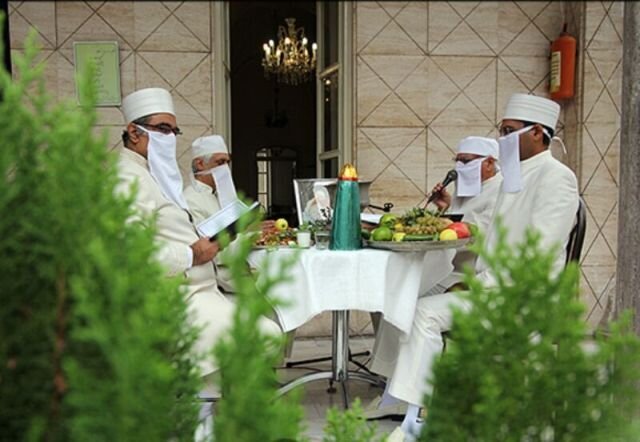Coronavirus: Mehregan observed online to renew friendships

TEHRAN – On Saturday, Iranian Zoroastrians in Yazd celebrated their ancient festival of Mehregan virtually over coronavirus concerns.
The religious event, however, was held a bit different from its original spirit, which traditionally arranges reunions to bring clusters of the faithful together in celebration of Mithra, an ancient goddess of friendship, affection, and love. The festivity is usually opened up with keynote speeches by Zoroastrian religious figures and officials, followed by Shahnameh recitations, exciting contests, and other joyful customaries.
“This ceremony is annually held with the presence of Zoroastrians, but in the last year and the current year it was held online in Yazd province due to the spread of the coronavirus,” one of the organizers, Manouchehr Arghavani, said on Saturday.
Last year, all Mehregan celebrations were called off or gone online across the country due to the coronavirus pandemic.
Meheregan, the largest Iranian festival after Noruz, marks the autumnal equinox when day and night are equal and it dates back to ancient times when the start of autumn was highly cherished according to tradition.
Meheregan, the largest Iranian festival after Noruz, marks the autumnal equinox when day and night are equal. It falls on the 196th day of the Iranian calendar year that usually equals October 2 in the Gregorian calendar. The festivity was used to be a traditional autumn harvest festival with several accounts of its origins.
During the Achaemenid era (c. 550–330 BC), Mehregan was observed in an extravagant style in Persepolis at a time for harvest when taxes were collected. Avestan texts divide the Iranian year into two equal parts or seasons; summer and winter. The advent of the two seasons is celebrated in Noruz and Mehregan.
A key feature for the event is large spreads in purple laden with various ingredients, dishes, and elements each on behalf of a particular belief. Fruits, vegetables, dried nuts, sweets, rosewater, grilled lamb meat, lotus seeds, and silver coins, and a scale are typically placed, the latter symbolizes autumnal equinox.
The legend says Mehregan was a day of victory for Fereydoon and Kaveh, who overcame Zahak. They imprisoned him in Mount Damavand where he later died of his wounds. After the capture of Zahak, Fereydoon was nominated as the king and the people celebrate this occasion with great fervor. The story has been narrated in Shahnameh, a long epic poem by the illustrated Persian poet Ferdowsi (940-1020 CE).
Yazd, the cradle of Zoroastrianism, is one of the unavoidable tourist destinations in Iran. In July 2017, the historical texture of the city of Yazd was named a UNESCO World Heritage.
Wedged between the northern Dasht-e Kavir and the southern Dasht-e Lut on a flat plain, the oasis city enjoys a very harmonious public-religious architecture that dates from different eras.
With its winding lanes, a forest of badgirs (wind catchers), mud-brick houses, atmospheric alleyways, and centuries of history, Yazd is a delightful place to stay, referring to as a ‘don't miss’ destination by almost all travel associates in the region.
Yazd Jameh Mosque, Dowlatabad Garden, the Yazd Atash Behram, also known as Atashkadeh-e Yazd, Towers of Silence, and adjacent desert landscape are among its tourist sites.
Iran seeks to register Mehriban jointly with Tajikistan on the intangible cultural heritage list of UNESCO.
AFM
Leave a Comment